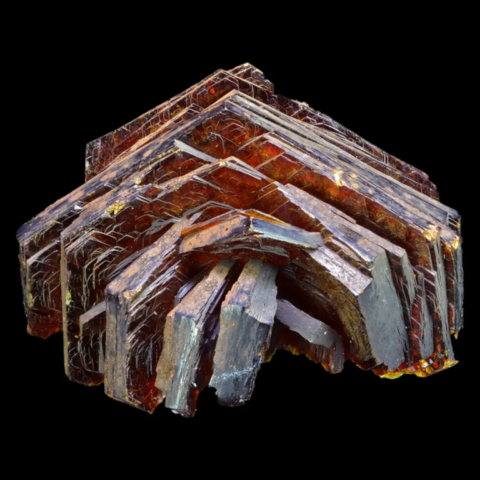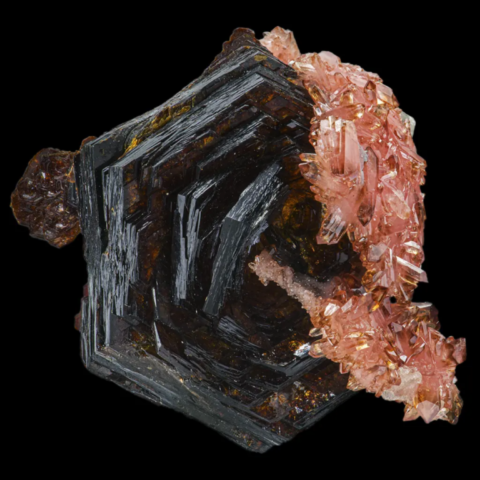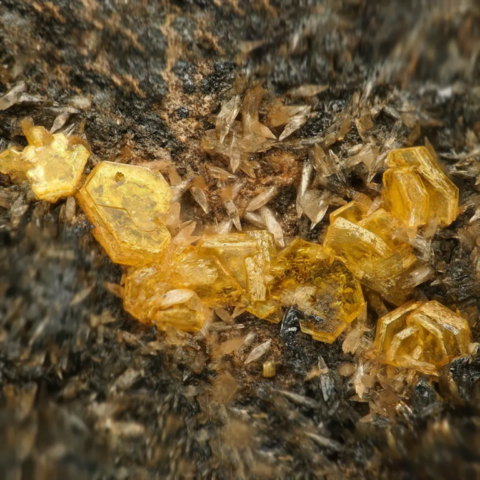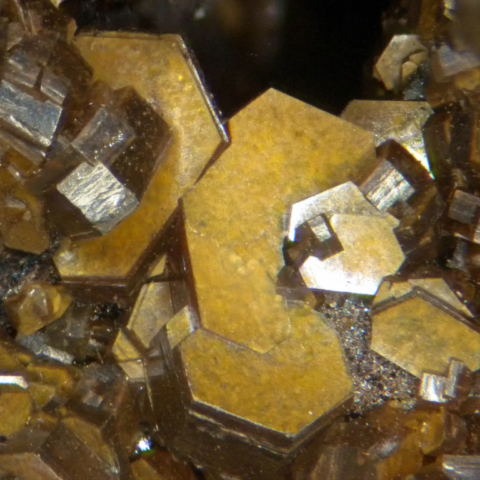SHIGAITE
Class : Sulfates, chromates, molybdates
Subclass : Hydrated sulfates
Crystal system : Trigonal
Chemistry : Mn6Al3(OH)18Na(H2O)6(SO4)2 6H2O
Rarity : Very rare
Shigaite is a rare mineral classified in the sulfate family. This mineral is typically a byproduct formed in metamorphosed manganese deposits. It is often associated with minerals such as rhodochrosite or hausmannite, depending on the locality. First discovered at the Ioi mine in Shiga Prefecture, Japan, its name pays homage to this region. Shigaite occurs as hexagonal tabular crystals, sometimes reaching nearly 3 cm, often grouped in lamellar aggregates or rosettes. Cleavage is perfect on {0001}. Shigaite varies in color from pale yellow to bright yellow, golden, or burnt orange, becoming brown to black when weathered. Its luster ranges from vitreous to dull, with a low hardness of about 2 on the Mohs scale. Due to its rarity, shigaite has no significant industrial applications, but it is prized by collectors because of its aesthetic appeal.
Photo : Shigaite on rhodochrosite from N'Chwaning I Mine, Kuruman, Kalahari manganese fields, Northern Cape Province, South Africa
Shigaite in the World
Shigaite in France
This mineral is not present in the French underground.
Twinning
A twin is reported on {0001} for this mineral species.
Fakes and treatments
No fake inventories for this mineral species.
Hardness : 2
Density : 2.32
Fracture : Irregular
Trace : Pale yellow to white
TP : Translucent to transparent
RI : 1.546
Birefringence : Undetermined
Optical character : Uniaxial -
Pleochroism : Visible
Fluorescence : None
Solubility : -
Magnetism : None
Radioactivity : None





